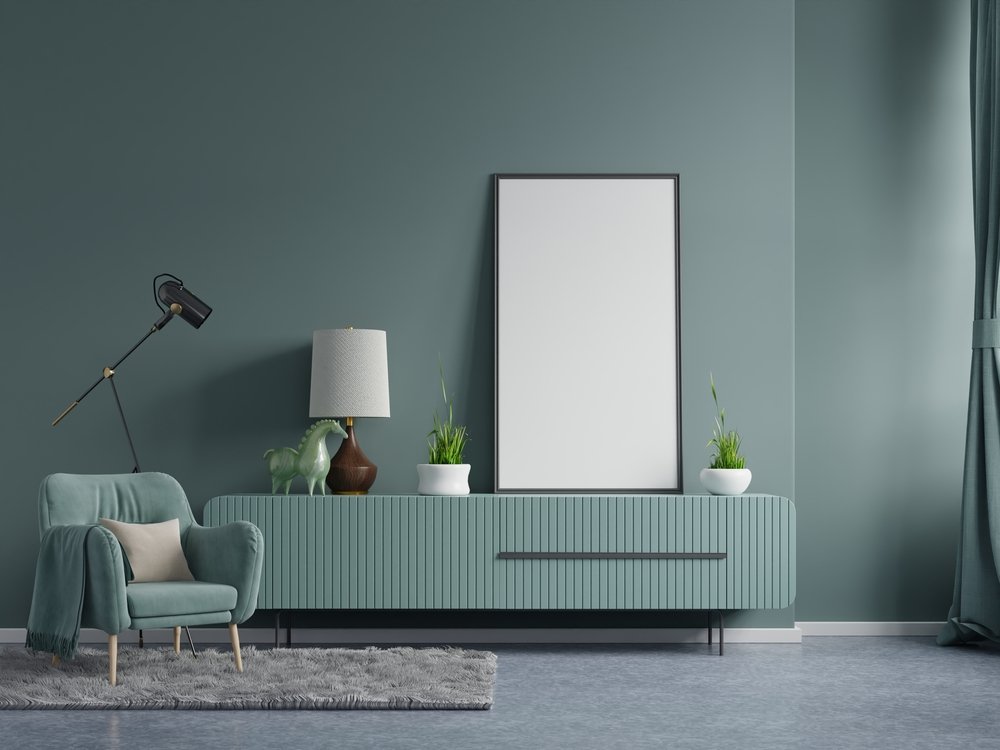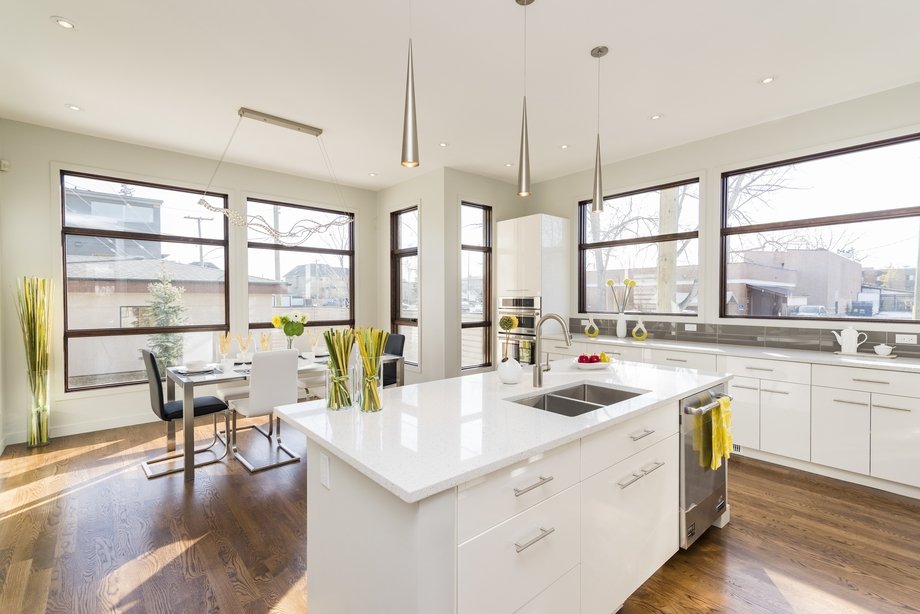Colours To Make a Room Feel Bigger and Brighter
Colour has the power to transform a room. Through the use of colour charts, you can choose colours to make a room feel bigger and improve the functionality of your house.
Without actually increasing the floor space, the right shades can create the illusion of space.
Best of all, there is an array of options to explore. You can achieve this interior design hack through classic neutrals, crisp whites, moodier shades, or soothing greens. Here are our 6 favourite options.
1. Blue

Using colours to make a room feel bigger has an easy starting point in blue. Because it mimics the expansive sky, blue is great for making any space feel bigger. Pale blue shades offer a soothing and calming effect. When combined with other light colours painted on doors, trims or ceilings, pale blue will gently open up a room.
Incorporating blue as an accent wall, or in the entire room, results in an understated and elegant statement.
For rooms that do not receive a lot of light, a deep navy can be used to create depth and give the same stately and cosy effect that black would.
If you opt for dark blue hues, match the large furniture items in the room to the same colour, such as a blue sofa, so that you blur the lines between the edges of the room. This will work to make the room feel larger.
We love blues as a choice for cabinets in kitchens and libraries.
2. Yellow

The use of colours to make a room feel bigger usually has an added bonus effect – it often makes the room brighter as well.
You can be guaranteed that yellow will make even the smallest room feel brighter and more cheerful, after all, it is the colour of sunshine!
Similar to white, yellow is a great light reflector and this allows it to have a space-enhancing effect.
Yellow is particularly useful for warming up rooms that receive limited natural light. These hues can lift moods and energise the home.
Go ahead and use your yellow decor pieces throughout the year, this positive colour is seasonless!
For a little diversity, add dimension to your room by combining this colour with white accents.
A pro tip: your floors will have an effect on the appearance of your yellow walls. Rich wood floors will have a darkening effect, and pale floors will brighten the colour.
3. Green

Green has gained popularity with interior designers because of its ability to turn a room into a sanctuary. Apart from enlarging a space, shades of green also make a home calmer and more relaxing.
A light green space will make you feel like you are in the middle of a large ocean. You can use it to achieve a brightening effect in both adult and children’s rooms. The vibrancy this hue brings contributes to the feeling of a bigger space.
Take it a step further and pair light green shades with olive green. This brings complex depth to a space and opens it up further.
We recommend using a range of green colours to make a room feel bigger, particularly in your office. Calming colours such as this are associated with increased productivity and lower stress levels. Learn more about bringing wellness into your designs from our recent article.
4. Grey

A great alternative to white, grey can be used to make a small room feel larger, or to add some contrast in a bright room. We have found this colour works best in an east or west-facing area of the home.
A light cool grey introduces a freshness and brightness that visually creates the appearance of more space.
Opt for cool greys in spaces with moderate light to give a cosy but expansive feel. Whilst grey works in almost any area of the home, its versatility shines in the bedroom.
A particularly dark room can benefit from a shimmering grey which will deceive the eye into seeing the space as lighter and airier. Pair this shade with blues and crisp whites.
Don’t be afraid to use darker greys. A rich hue will make your room’s walls appear to extend and disappear.
5. White

A common choice, white has all the right properties needed to brighten up a room as it reflects light better than any other colour. Rooms that are bathed in natural light will especially feel bigger when painted white.
Instead of the bright blue-tinged white, we suggest selecting well-balanced warm hues. You can combine these neutral warm whites with deeper hues on the ceilings or doors to add dimension to the room.
Try eggshell or satin finishes for the illusion of even more space.
Regardless of your home’s aesthetic, white can enhance the look of any room. From the kitchen, to the bedroom, bathroom or living room, white creates a perfect foundation for any design style.
A small south–facing living room will look bigger when shades such as ivory and beige are combined to design its interior.
6. Black

Surprising to most homeowners, when used creatively, black is very effective in creating a sense of drama in small spaces.
A north-facing room that receives very little natural light will not benefit from all white walls. Instead, lean into the lack of sun and add black accents to the space.
When used on ceilings or on walls, black sets the tone for a calming environment that can make a small room feel bigger.
A black wall will recede into the background thus blurring the confines of a room. Your eyes will then focus on the furniture in the space and not the built boundaries.
Go all out and also paint the trims in the same hue and watch the area take on an appearance of grandeur.
In Conclusion
Small spaces present various challenges to interior designers. Choosing the right colours for them is one of the most important steps in opening them up.
This will make the difference between a cluttered looking room and an inviting bright one.
For expert advice on which hues work best with your home’s aesthetic, give our professional design team a call or come chat with us in person at our London showroom.
With a few tricks, we will create the illusion of space in your rooms and make you fall in love with your house again.




